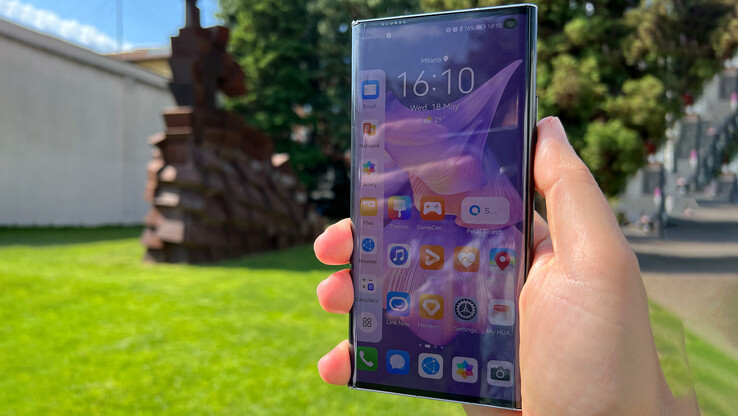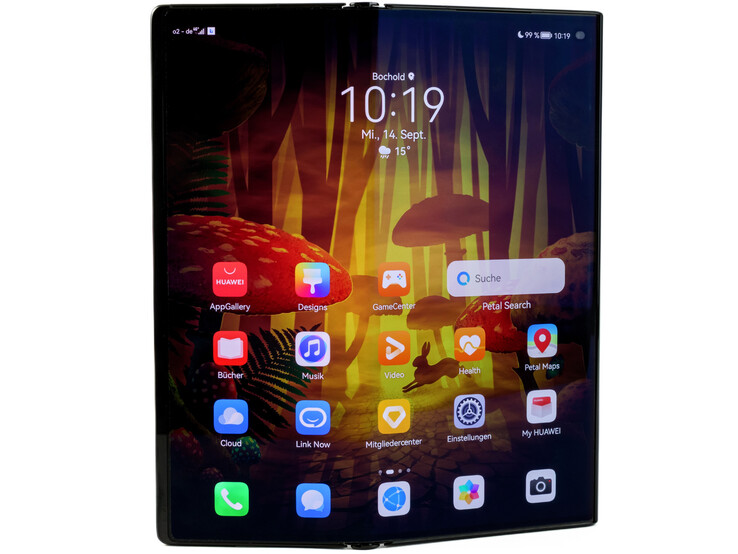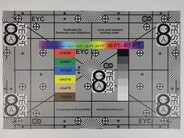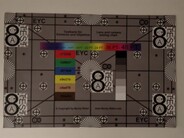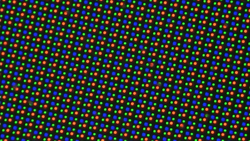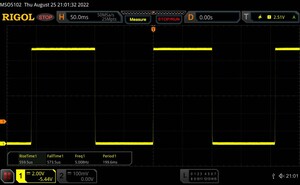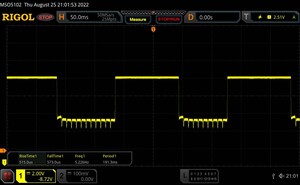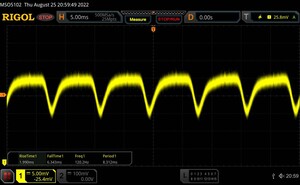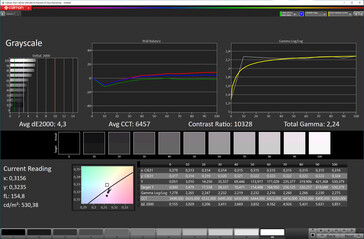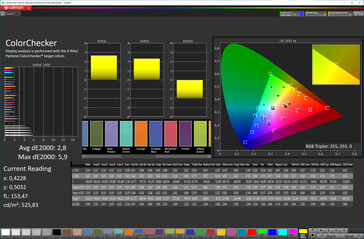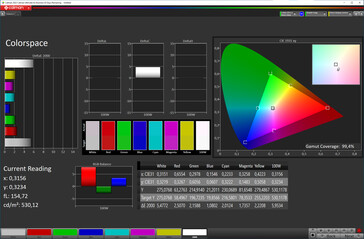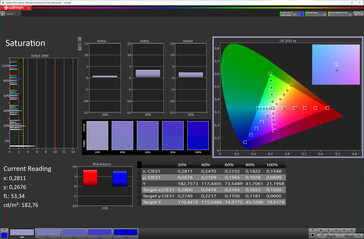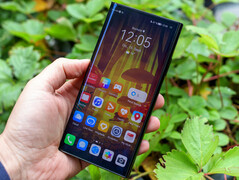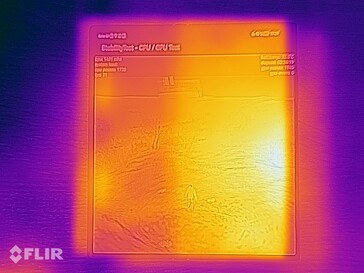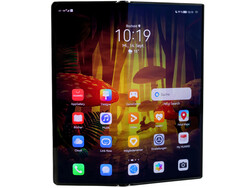Huawei Mate Xs 2 review - Foldable smartphone with handicap
Possible competitors in comparison
Rating | Date | Model | Weight | Drive | Size | Resolution | Price |
|---|---|---|---|---|---|---|---|
| 84.1 % v7 (old) | 09 / 2022 | Huawei Mate Xs 2 SD 888 4G, Adreno 660 | 255 g | 512 GB UFS 3.1 Flash | 7.80" | 2480x2220 | |
| 88.9 % v7 (old) | 09 / 2021 | Samsung Galaxy Z Fold3 5G SD 888 5G, Adreno 660 | 271 g | 256 GB UFS 3.1 Flash | 7.60" | 2208x1768 | |
| 82.6 % v7 (old) | 04 / 2020 | Huawei Mate Xs Kirin 990 5G, Mali-G76 MP16 | 300 g | 512 GB UFS 3.0 Flash | 8.00" | 2480x2200 | |
| 86.9 % v7 (old) | 08 / 2022 | Vivo X Fold SD 8 Gen 1, Adreno 730 | 311 g | 256 GB UFS 3.1 Flash | 8.03" | 2160x1916 |
Case and features - Mate Xs 2 with improved hinge
Huawei's Mate Xs 2 has become slightly smaller and, above all, considerably lighter than its predecessor. However, it is actually a bit thicker (0.1 mm), but still thinner than the competition, especially since most of the foldable is only a slim 5.4 millimeters high when unfolded.
Huawei sticks to its concept of moving the entire panel to the outside, which feels comfortable in the hand due to the resulting curves, but the display is also less protected than in the inboard variants. Even the protective film applied is not very reassuring. The build quality has improved noticeably, and especially the hinge now makes a much more stable impression than in the predecessor, but it sometimes buckles slightly when the display is not opened completely. The locking mechanism is very reliable in everyday use and can still be opened easily with the touch of a finger. All in all, we like the build quality and the material impression, only the plastic back does not quite fit into this picture.
The equipment is almost unchanged, only the change of the SoC also means the loss of 5G, since the Mate Xs was still equipped with the Kirin 990 5G which is no longer possible due to the trade restrictions.
| SD Card Reader - average JPG Copy Test (av. of 3 runs) | |
| Huawei Mate Xs 2 (Huawei NanoMemory) | |
| Average of class Smartphone (5.72 - 58.9, n=69, last 2 years) | |
Cross Platform Disk Test (CPDT)
Communication, software and operation - No more 5G for the Huawei smartphone
For the reasons already mentioned, the Huawei Mate Xs 2 can only access the mobile data network with LTE at best. The frequency band coverage is good but should be wider in view of the price range. All bands are available in Europe, but there are one or two gaps in intercontinental coverage.
Wi-Fi 6 with VHT160 support is available for WLAN connections. Although the 6 GHz network is missing, Huawei still promises high data rates, which is unfortunately not confirmed in the test with our reference router Asus ROG Rapture GT-AXE11000. Hopefully, Huawei will improve this with future updates.
The telephony features of Huawei's Mate Xs2 are convincing. When held to the ear, the user's voice is conveyed very naturally and the noise suppression also works well. The speaker mode reverberates a bit, but can also be used well. Functions like VoLTE and WLAN calls are available.
Open source Android 11 with EMUI 12 is installed as the operating system, which is the European equivalent of Harmony OS 2.0. Google services or the Play Store are still not found here. Instead, AppGallery is available. If an app is missing, Petal Search can search for it on the web and install it via third-party sites. The smartphone then checks them, but there is still a residual risk of malware, which Huawei is probably also aware of because a thick disclaimer is displayed before the installation. This all works quite well, but the development is slow. The upcoming Harmony OS 3.0 and EMUI 13 are quite late and Huawei could not or did not want to tell us which Android version they are based on. Cross-installed apps do not always run smoothly either. A good example is Microsoft OneDrive, which has to be installed via Petal Search in Germany because the version in the AppGallery is not released here. Initially, it works properly, but at the latest after an update of the HMS core, it no longer starts. This causes frustration, especially since a simple reinstallation is often not enough, but the app rests have to be laboriously removed manually first. Furthermore, the Mate Xs 2 did not want to connect to a Windows PC for data exchange in the test. The USB connection was established, but no drive was displayed that could be accessed. Even on a Matebook 13 data exchange was only possible via Huawei Share; we faced the same problem with a wired connection.
The fingerprint sensor is located in the smartphone's power button and ensures quick and reliable unlocking. Additionally or alternatively, a less secure authentication via the front-facing camera can be used.
| Networking | |
| iperf3 transmit AX12 | |
| Samsung Galaxy Z Fold3 5G | |
| Huawei Mate Xs | |
| iperf3 receive AX12 | |
| Huawei Mate Xs | |
| Samsung Galaxy Z Fold3 5G | |
| iperf3 transmit AXE11000 | |
| Vivo X Fold | |
| Huawei Mate Xs 2 | |
| iperf3 receive AXE11000 | |
| Vivo X Fold | |
| Huawei Mate Xs 2 | |
Cameras - Great triple camera in the Huawei foldable
Huawei's Mate Xs 2 has a front-facing camera that is at best sufficient for video calls with low demands. Selfies are no fun with it. But they do not have to be, because the main camera with its full range of options can also be used for selfies by simply displaying a digital viewfinder on the back when folded.
The main camera relies on a 50 MP True Chroma sensor, which takes very good pictures even in low light. The ultra-wide-angle lens is also convincing. It is just a pity that Huawei does not use a high-resolution sensor anymore, which is noticeable in the depth of field and details. The triple optical zoom (max. 30x digital) also delivers good results, but the digital zoom is only average. Videos can at best be recorded in Ultra HD with 60 FPS.
Image comparison
Choose a scene and navigate within the first image. One click changes the position on touchscreens. One click on the zoomed-in image opens the original in a new window. The first image shows the scaled photograph of the test device.
Main cmeraMain cameraUltra wide-angle5-x ZoomLow-Light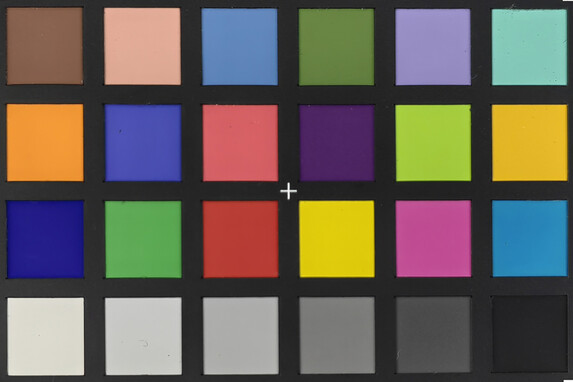
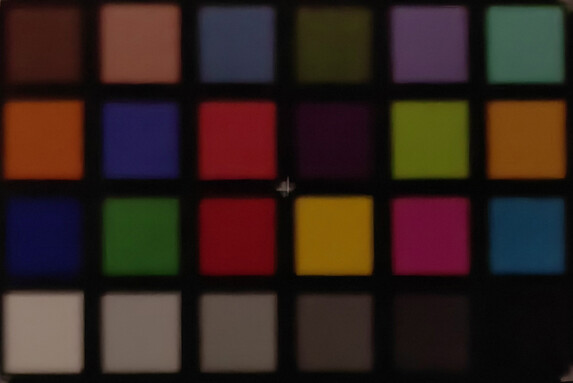
Display - Foldable OLED with 120 Hz
The OLED panel of the Huawei Mate Xs 2 has a display diagonal of 7.8 inches (19.8 cm, 2,480 x 2,200 pixels) when unfolded. When folded, the back is disabled and a 6.5-inch (16.5 cm, 2,480 x 1,176 pixels) display remains visible. Huawei has greatly improved the brightness and now achieves an average luminosity of 769 cd/m² with a pure white display and activated ambient light sensor. It hardly gets any brighter (780 cd/m²) when dark and bright areas are evenly distributed (APL18). If you adjust the brightness manually, you have 536 cd/m² at your disposal. The HDR standards HLG, HDR10 as well as HDR10+ are supported, and a DRM certification is also available.
The panel supports a refresh rate of up to 120 Hz. This or 60 Hz fixed can be chosen in the settings. In automatic mode, the system automatically switches between 60, 90, and 120 Hz.
Huawei relies on a high-frequency DC dimming mode with 1,440 Hz, which is supposed to be particularly easy on the eyes. We can only determine flickering at the frame rate's level when measuring with the oscilloscope. We cannot detect temporal dithering, but we looked at the display with a microscope and a 240 FPS slow motion video (dark gray, at full brightness).
| |||||||||||||||||||||||||
Brightness Distribution: 95 %
Center on Battery: 763 cd/m²
Contrast: ∞:1 (Black: 0 cd/m²)
ΔE ColorChecker Calman: 2.8 | ∀{0.5-29.43 Ø4.79}
ΔE Greyscale Calman: 4.3 | ∀{0.09-98 Ø5}
99.4% sRGB (Calman 2D)
Gamma: 2.24
CCT: 6457 K
| Huawei Mate Xs 2 OLED, 2480x2220, 7.8" | Samsung Galaxy Z Fold3 5G Dynamic AMOLED, 2208x1768, 7.6" | Huawei Mate Xs OLED, 2480x2200, 8" | Vivo X Fold AMOLED, 2160x1916, 8" | |
|---|---|---|---|---|
| Response Times | -483% | -280% | -18% | |
| Response Time Grey 50% / Grey 80% * (ms) | 1.09 ? | 10.4 ? -854% | 5.2 ? -377% | 1.8 -65% |
| Response Time Black / White * (ms) | 1.13 ? | 2.4 ? -112% | 3.2 ? -183% | 0.8 29% |
| PWM Frequency (Hz) | 120.2 | 245.1 ? | 242.7 ? | 120 |
| Screen | 14% | -10% | 24% | |
| Brightness middle (cd/m²) | 763 | 808 6% | 417 -45% | 730 -4% |
| Brightness (cd/m²) | 769 | 820 7% | 418 -46% | 724 -6% |
| Brightness Distribution (%) | 95 | 97 2% | 99 4% | 95 0% |
| Black Level * (cd/m²) | ||||
| Colorchecker dE 2000 * | 2.8 | 2.9 -4% | 2.6 7% | 1.66 41% |
| Colorchecker dE 2000 max. * | 5.9 | 4.2 29% | 7.7 -31% | 2.92 51% |
| Greyscale dE 2000 * | 4.3 | 2.5 42% | 2 53% | 1.6 63% |
| Gamma | 2.24 98% | 2.01 109% | 2.31 95% | 2.28 96% |
| CCT | 6457 101% | 6359 102% | 6276 104% | 6395 102% |
| Total Average (Program / Settings) | -235% /
-111% | -145% /
-77% | 3% /
14% |
* ... smaller is better
Display Response Times
| ↔ Response Time Black to White | ||
|---|---|---|
| 1.13 ms ... rise ↗ and fall ↘ combined | ↗ 0.5595 ms rise | |
| ↘ 0.5735 ms fall | ||
| The screen shows very fast response rates in our tests and should be very well suited for fast-paced gaming. In comparison, all tested devices range from 0.1 (minimum) to 240 (maximum) ms. » 4 % of all devices are better. This means that the measured response time is better than the average of all tested devices (20.3 ms). | ||
| ↔ Response Time 50% Grey to 80% Grey | ||
| 1.09 ms ... rise ↗ and fall ↘ combined | ↗ 0.515 ms rise | |
| ↘ 0.573 ms fall | ||
| The screen shows very fast response rates in our tests and should be very well suited for fast-paced gaming. In comparison, all tested devices range from 0.165 (minimum) to 636 (maximum) ms. » 4 % of all devices are better. This means that the measured response time is better than the average of all tested devices (31.7 ms). | ||
Screen Flickering / PWM (Pulse-Width Modulation)
| Screen flickering / PWM detected | 120.2 Hz | ||
The display backlight flickers at 120.2 Hz (worst case, e.g., utilizing PWM) . The frequency of 120.2 Hz is very low, so the flickering may cause eyestrain and headaches after extended use. In comparison: 53 % of all tested devices do not use PWM to dim the display. If PWM was detected, an average of 8152 (minimum: 5 - maximum: 343500) Hz was measured. | |||
Measurement series with fixed zoom level and different brightness settings
Performance, emissions and battery life
The Huawei Mate Xs 2 is powered by a Snapdragon 888 4G with 8 GB of working memory, which ensures smooth system performance, even during multitasking. In the benchmarks, the SoC performs at the expected level. When the performance mode is enabled, some extra power is also available in GPU-intensive tasks, but this noticeably sucks on the battery.
The surface temperatures of Huawei's foldable are never uncomfortable. Even under constant load, it only gets warm to the touch in some places. However, this does not apply to the SoC, which already throttles noticeably after a short time and barely has a better long-term performance than, for example, a Galaxy Z Fold3 which is why it can be safely deactivated.
The Mate Xs 2's two speakers are really good and still deliver a comparatively good playback quality even at maximum volume. USB-C is available for wired external sound output, and Bluetooth 5.2 is available wirelessly. However, the latter can only use a fairly limited number of audio codecs (SBC, AAC, LDAC).
Despite a 4,600 mAh battery, the runtimes of Huawei's smartphone are rather weak. The Mate Xs 2 will not make it through the day with not even eight hours of intensive use. However, Huawei includes a 66-watt power adapter that can recharge the battery to 90% within 30 minutes.
| GFXBench | |
| on screen Aztec Ruins Normal Tier Onscreen (sort by value) | |
| Huawei Mate Xs 2 | |
| Samsung Galaxy Z Fold3 5G | |
| Huawei Mate Xs | |
| Vivo X Fold | |
| Average Qualcomm Snapdragon 888 4G (30 - 44, n=3) | |
| Average of class Smartphone (6.2 - 166, n=210, last 2 years) | |
| 1920x1080 Aztec Ruins Normal Tier Offscreen (sort by value) | |
| Huawei Mate Xs 2 | |
| Samsung Galaxy Z Fold3 5G | |
| Huawei Mate Xs | |
| Vivo X Fold | |
| Average Qualcomm Snapdragon 888 4G (50 - 72, n=3) | |
| Average of class Smartphone (3.4 - 332, n=210, last 2 years) | |
| on screen Aztec Ruins High Tier Onscreen (sort by value) | |
| Huawei Mate Xs 2 | |
| Samsung Galaxy Z Fold3 5G | |
| Huawei Mate Xs | |
| Vivo X Fold | |
| Average Qualcomm Snapdragon 888 4G (20 - 31, n=3) | |
| Average of class Smartphone (0.85 - 144, n=211, last 2 years) | |
| 2560x1440 Aztec Ruins High Tier Offscreen (sort by value) | |
| Huawei Mate Xs 2 | |
| Samsung Galaxy Z Fold3 5G | |
| Huawei Mate Xs | |
| Vivo X Fold | |
| Average Qualcomm Snapdragon 888 4G (20 - 27, n=3) | |
| Average of class Smartphone (1.2 - 129, n=210, last 2 years) | |
| Huawei Mate Xs 2 | Samsung Galaxy Z Fold3 5G | Huawei Mate Xs | Vivo X Fold | Average 512 GB UFS 3.1 Flash | Average of class Smartphone | |
|---|---|---|---|---|---|---|
| AndroBench 3-5 | -10% | -22% | 31% | 26% | 47% | |
| Sequential Read 256KB (MB/s) | 1850.72 | 1934 4% | 1767 -5% | 1850.6 0% | 1867 ? 1% | 2202 ? 19% |
| Sequential Write 256KB (MB/s) | 739.83 | 790 7% | 402.7 -46% | 1405 90% | 1303 ? 76% | 1819 ? 146% |
| Random Read 4KB (MB/s) | 260.49 | 215.5 -17% | 202.9 -22% | 293.4 13% | 288 ? 11% | 292 ? 12% |
| Random Write 4KB (MB/s) | 301.38 | 195.7 -35% | 259.1 -14% | 358.1 19% | 354 ? 17% | 334 ? 11% |
Temperature
(+) The maximum temperature on the upper side is 36.6 °C / 98 F, compared to the average of 35.2 °C / 95 F, ranging from 21.9 to 247 °C for the class Smartphone.
(+) The bottom heats up to a maximum of 33 °C / 91 F, compared to the average of 34 °C / 93 F
(+) In idle usage, the average temperature for the upper side is 30.9 °C / 88 F, compared to the device average of 32.9 °C / 91 F.
Speaker
Huawei Mate Xs 2 audio analysis
(+) | speakers can play relatively loud (83.4 dB)
Bass 100 - 315 Hz
(-) | nearly no bass - on average 15.2% lower than median
(±) | linearity of bass is average (9.4% delta to prev. frequency)
Mids 400 - 2000 Hz
(+) | balanced mids - only 3.4% away from median
(+) | mids are linear (4.4% delta to prev. frequency)
Highs 2 - 16 kHz
(±) | higher highs - on average 5.1% higher than median
(+) | highs are linear (3% delta to prev. frequency)
Overall 100 - 16.000 Hz
(+) | overall sound is linear (14.6% difference to median)
Compared to same class
» 1% of all tested devices in this class were better, 2% similar, 96% worse
» The best had a delta of 11%, average was 35%, worst was 134%
Compared to all devices tested
» 18% of all tested devices were better, 4% similar, 78% worse
» The best had a delta of 4%, average was 24%, worst was 134%
Samsung Galaxy Z Fold3 5G audio analysis
(+) | speakers can play relatively loud (88.7 dB)
Bass 100 - 315 Hz
(-) | nearly no bass - on average 23.4% lower than median
(±) | linearity of bass is average (10.5% delta to prev. frequency)
Mids 400 - 2000 Hz
(+) | balanced mids - only 3.8% away from median
(+) | mids are linear (4.8% delta to prev. frequency)
Highs 2 - 16 kHz
(+) | balanced highs - only 3.2% away from median
(+) | highs are linear (4.2% delta to prev. frequency)
Overall 100 - 16.000 Hz
(+) | overall sound is linear (14.8% difference to median)
Compared to same class
» 2% of all tested devices in this class were better, 2% similar, 96% worse
» The best had a delta of 11%, average was 35%, worst was 134%
Compared to all devices tested
» 19% of all tested devices were better, 4% similar, 77% worse
» The best had a delta of 4%, average was 24%, worst was 134%
Battery life
| Battery Runtime - WiFi Websurfing | |
| Average of class Smartphone (12.1 - 54.1, n=209, last 2 years) | |
| Vivo X Fold | |
| Samsung Galaxy Z Fold3 5G | |
| Huawei Mate Xs | |
| Huawei Mate Xs 2 | |
Pros
Cons
Verdict - Strong concept with obstacles
We like the folding concept of bending the display outwards very much in everyday use, even though the panel is less protected as a result. Multitasking is a real joy with the Mate Xs 2, and EMUI 12 is a familiar companion visually, but we miss the missing Google services in everyday use. Likewise, it takes a bit more effort to install apps that are missing in the AppGallery, but they usually do not run smoothly. The connection problems with Windows that occurred in the test are incomprehensible to us.
The Huawei Mate Xs 2 could be a strong foldable, but battery runtimes and the software are rather weak
The Huawei smartphone takes a big step forward compared with its predecessor. Especially in terms of value and the hinge architecture, it shows great improvement. The display is now much brighter and even works with 120 Hz. However, it is not an LTPO OLED, which could also be a reason for the rather weak battery runtimes. Even though the SoC is from last year, it offers great performance. The lack of 5G, missing audio codecs for Bluetooth, and the rather slow Wi-Fi are more annoying, although the latter will rarely be noticed in everyday use.
The camera setup is convincing, but it is not enough to justify such a high price (RRP: 1,999 Euros), especially since the competition is consistently cheaper. The Galaxy Z Fold3 and Fold4 are worth mentioning here. If you are not afraid of importing, you have the option of the Vivo X Fold is another alternative.
Price and availability
The Huawei Mate Xs 2 can be purchased directly from the Huawei online store but will also be available from notebooksbilliger.de, Amazon and MediaMarkt offered.
Huawei Mate Xs 2
- 09/16/2022 v7 (old)
Daniel Schmidt




